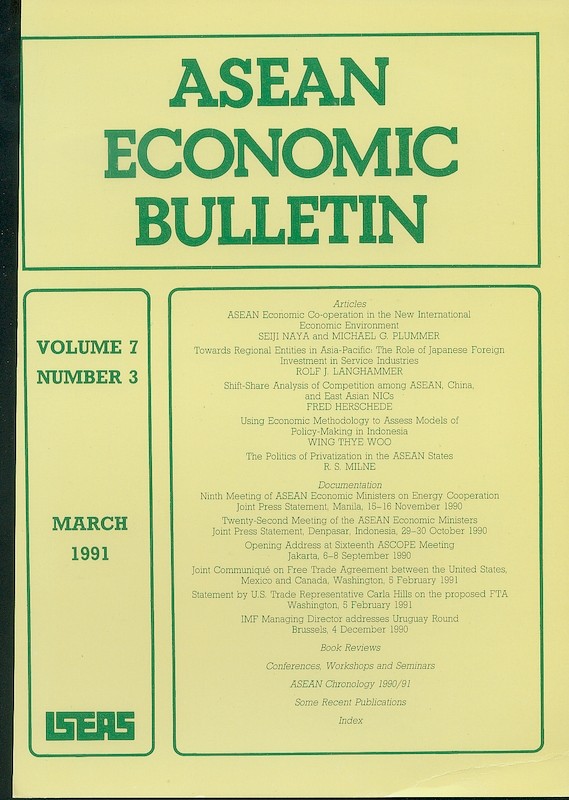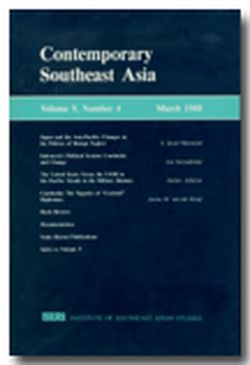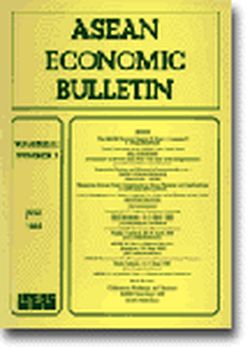ASEAN Economic Bulletin Vol. 8/2 (Nov 1991)

Date of publication:
November 1991
Number of pages:
126
Code:
AE8/2
Contents
-
Preliminary pages with Preface
- ARTICLES
-
Does APEC Make Sense?, by Helen Hughes, author see abstractThe Asia Pacific Economic Co-operation (APEC) concept was initiated in December 1989. APEC has held two ministerial meetings subsequently and developed a number of work projects. It is, however, still defining its role. This article assesses the desirability and potential for APEC's development into a regional trading block as a response to the expansion and deepening of the European Community and the formation of the United States-Canada Free Trade Arrangement with probable Mexican participation. The political economy of trading blocs and the economics of regional trade arrangements are examined. The development of inward-oriented trade is questioned. It is suggested that APEC's main role should be to continue to bring together the outward orientation that has served East Asian countries so well in the past by acting as a regional lobby for open global trade.
-
ASEAN Economic Co-operation: A Stock-Taking from a Political Economy Point of View, by Rolf J Langhammer, author see abstractThe article tries to explain the performance of ASEAN as a regional body of integration and co-operation under a political economy point of view. The success of a scheme like ASEAN is seen to be dependent on the type of "goods" (or "services") supplied by the regional organization. If ASEAN would have acted as complement to the private sector producing private goods and to national authorities offering services of national scope only, and not as a substitute, it would have been more successful than it actually was. It is argued that the only supranational and public good supplied by ASEAN is the Dialogue Partner System as it strengthens the collective bargaining power of ASEAN countries against the major trading partner. Sub-regional co-operation, such as facilitating cross border investment ("growth triangle") and, in particular, a common stance against third countries in areas of essential interest to ASEAN member countries, is looked upon as promising areas of joint policy making.
-
A Policy Analysis of the ASEAN-U.S. Initiative, by Robert L Curry, Jr., author see abstractThe ASEAN-U.S. Initiative (AUI) provides the intellectual content and structural substance for the Memorandum of Understanding (MOU) recently agreed to by ASEAN and U.S. officials. The MOU creates a trade and investment co-operation committee aimed at improving economic liberalization between the United States and ASEAN. The article presented herein gives a background to the AUI's development, outlines its features, and makes some observations about the potential usefulness of the MOU.
-
The Treaty of Rome and its Relevance for ASEAN, by Hans Christoph Rieger, author see abstractThe perceptions of the European Community (EC) in the members of the Association of South East Asian Nations (ASEAN) have undergone changes in the course of time. In the formative years of ASEAN and in the 1970s, the EC tended to be seen as an example worth emulating But in the 1980s disillusionment with Europe's growth potential raised doubts about the gains to be had from economic integration. The pendulum now seems to be swinging in the other direction once more. The differences and similarities in the initial conditions between the European Community and ASEAN are examined in this article, before the events leading to the Treaty of Rome are sketched. A brief description of the organization of the EC is followed by a summary of the lessons that can be drawn from the European experience for the present ASEAN situation.
-
ASEAN, Indo-China and Myanmar: Towards Economic Co-operation?, by Mya Than, author see abstractSince the later part of the 1980s, there have been gradual political and economic development in the formerly centrally-planned economies of mainland Southeast Asia. This article reviews those developments in the light of the changing situation in the Asia-Pacific region. The political, social and economic relations of these nations with ASEAN member countries are also examined. In the conclusion, the Indo-Chinese nations and Myanmar's rationale and prospects of joining ASEAN, EAEG or any other regional forum are discussed.
-
International and Regional Integration: The Political Economy of the Electronics Industry in ASEAN, by Ian Chalmers, author see abstractThis article examines the electronics industry in ASEAN in order to arrive at some policy suggestions for its future development. Can other ASEAN states follow Singapore's example of moving into high value-added production? Are international investment conditions conducive? Or are domestic circumstances more important? It is found that state intervention has been crucial in shaping the industry's growth in the past, and that state policy will be the key to promoting economic co-operation in the future.
-
DOCUMENTATION: Joint Declaration of the 9th EC-ASEAN Ministerial Meeting, Luxembourg, 30-31 May 1991
-
DOCUMENTATION: Joint Press Release of the 2nd Meeting of the ASEAN-ROK Joint Sectoral Cooperation Committee, Seoul, 11-12 June 1991
-
DOCUMENTATION: Joint Press Statement of the 10th ASEAN-U.S. Dialogue, Washington, D. C., 20-21 June 1991
-
DOCUMENTATION: Joint Communiqu of the 24th ASEAN Ministerial Meeting, Kuala Lumpur, 19-20 July 1991
-
DOCUMENTATION: Summary Record of Discussions at the Research Planning Meeting on the Changing International Economic Environment, particularly in Asia and the Pacific and its Implications for India and Southeast Asia, New Delhi, 1-2 May 1991
-
DOCUMENTATION: Resum of Major Themes of Discussion at the Joint IPS-ISEAS ASEAN Roundtable, ASEAN Economic Co-operation in the 1990s, 27-28 June 1991
-
BOOK REVIEW: Made in America: Regaining the Productive Edge, by Michael L Dertouzos, Richard K Lester, Robert M Solow and The MIT Commission on Industrial Productivity, by Fred Herschede, author
-
BOOK REVIEW: Economic Policy Management: A Japanese Approach, by Naomi Maruo, by Churai Tapvong, author
-
BOOK REVIEW: Governing the Commons: The Evolution of Institutions for Collective Action, by Elinor Ostrom, by Maria Seda, author
-
BOOK REVIEW: Industrial Policy, by A M Khusro et al., by Mukul G Asher, author
-
Conferences, Workshops and Seminars
-
ASEAN Chronology 1991
-
Some Recent Publications





